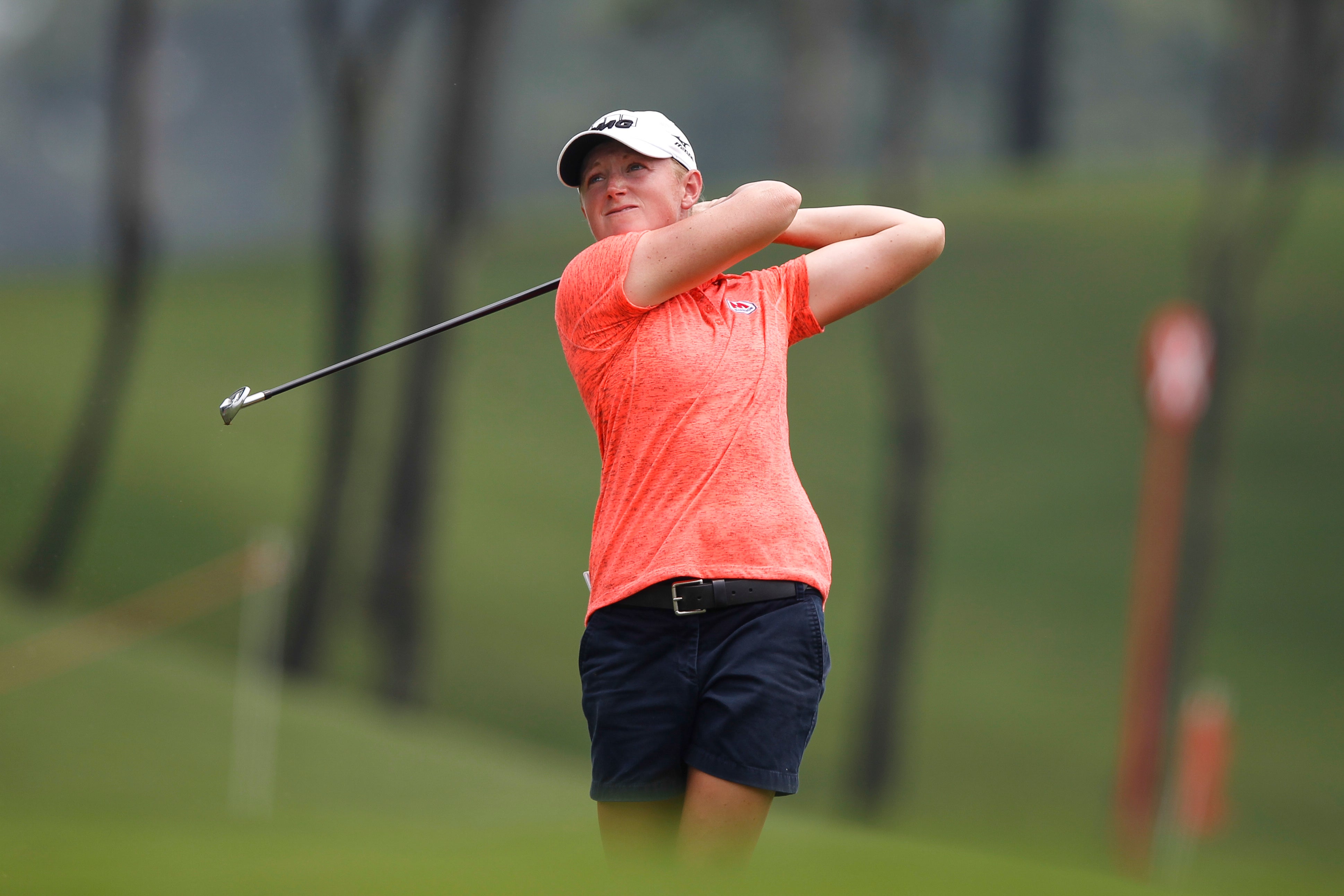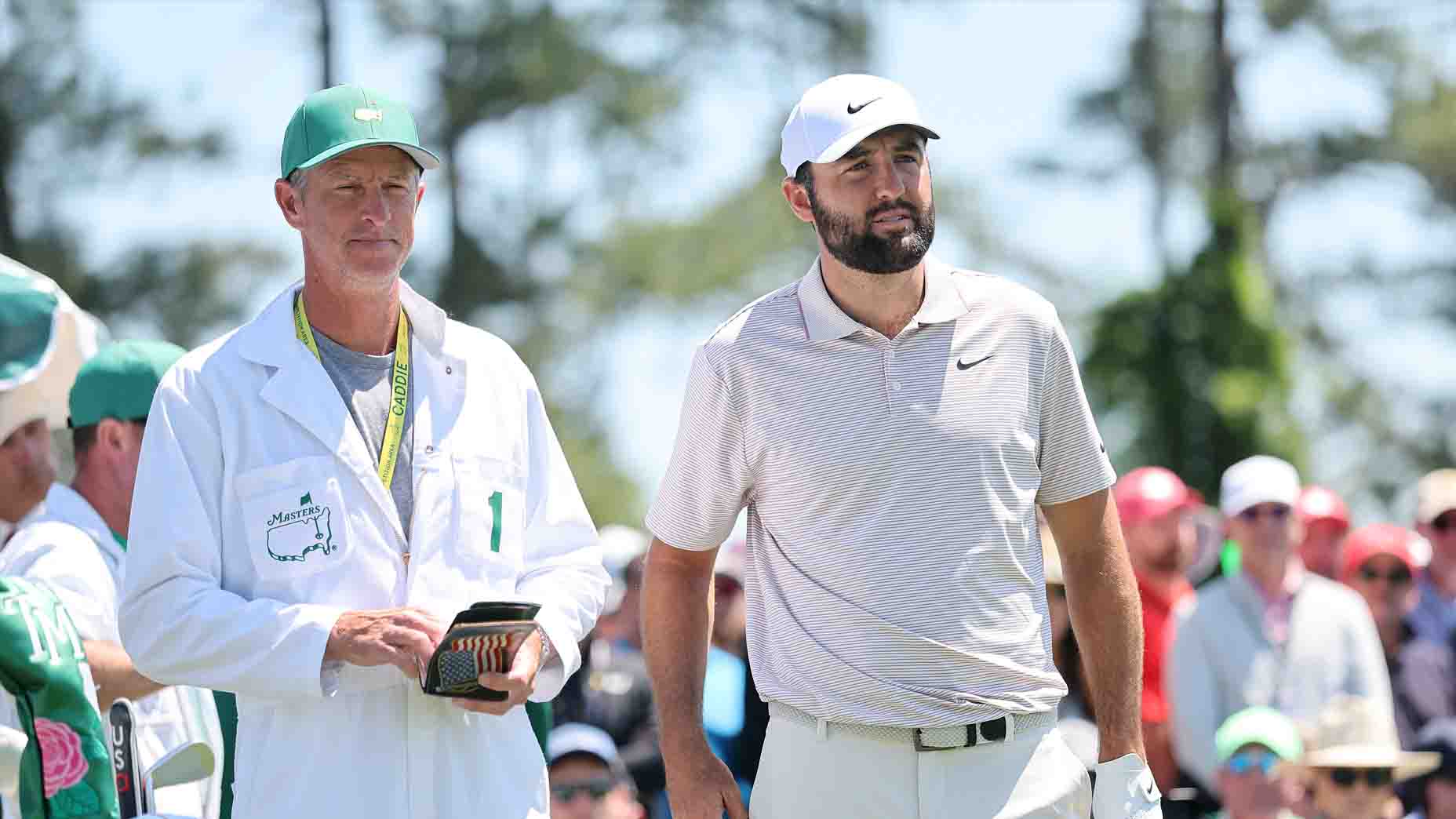When Stacy Lewis said that she was frustrated by the gender pay gap in professional golf in an interview with GOLF.com this week, her remarks raised a logical follow-up question: Why is this happening?
Why do female professional golfers make pennies on the dollar compared to their male counterparts, and not the usual, if still troubling, $.78 on the dollar that women earn across other professions?
Fair question but it’s also the wrong question.
LPGA players collect smaller checks because there’s greater interest in the men’s game. That leads to bigger sponsorships, fatter TV deals and more revenue for the PGA Tour, and thus ultimately bigger paydays for male pros.
NEWSLETTERS: Sign up for latest news, scores, player updates and tips
That’s no secret. Lewis specifically brings it up in her interview.
The bigger, better question to ask: Why is there less interest in the women’s game? And better yet, how do we change that?
Female athletes are widely perceived to be inferior: less athletic, less skilled, less entertaining. That perception—the very definition of gender discrimination and inequality—is regularly stated as fact, in the media, on social media and beyond: Women’s athletics are simply less “watchable.”
The critics don’t even go out of their way to veil the gender bias.
But that kind of narrow-minded logic simply doesn’t apply to women’s golf (and shouldn’t be applied to most anything else).
“We’re probably actually hitting more fairways than the guys and more greens than the guys,” Lewis said. “There are certain parts of the game that we actually do better.”
Check the stats. Lewis has hit 97 of 112 fairways this year. That’s a staggering 87% success rate, which doesn’t even place her among the top five players in that category on the LPGA tour. On the men’s side, Thomas Aiken leads the category. His hit rate: 77.26%.
On the LPGA tour, five players have a greens-in-regulation percentage north of 80%, led by Ha Na Jang, who hits 86% of her greens—eight-six percent! On the PGA Tour this season, not a single player has a GIR rate of better than 80%.
Bombers? The LPGA has those, too, with five players averaging 280-plus off the tee. Lexi Thompson’s average driving distance is an eye-popping 290 yards. That’s just two yards shy of Jordan Spieth’s average poke. Sure, the average driving distance on the LPGA tour is 270 yards, but if the biggest star in men’s golf can turn heads without hitting moon balls, it undercuts “the ladies don’t hit it far enough” argument.

Undoubtedly, there are certain spectacles on the PGA Tour with which the women have a hard time competing: Dustin Johnson smoking a drive 340, say, or Bubba Watson bending a ball 90 degrees around a stand of pines. But over the years the headliners in men’s golf, from Nick Faldo to Zach Johnson, haven’t all been long-ball hitters or physics-defying shotmakers.
Golf relies on creativity, guile and guts, all of which women have in equal parts to men.
Would it help to have a Serena Williams of women’s golf? A female Tiger Woods, if you will? Of course. But, as Lewis pointed out, the LPGA does bring something else to the table that the PGA Tour does not: accessibility to its stars.
“[Fans] get closer to us than they do to the guys,” she said. “They really get to know us. Once you get someone to a tournament, you have a fan for life.”
Lydia Ko, a precocious 18-year-old who also happens to be the best female golfer in the world (pause and think about that for a moment), won a tournament last week in her native New Zealand playing just minutes after an earthquake rocked the golf course.
For her efforts, Ko took home a whopping $33,000, which she promptly vowed to donate to earthquake relief. Imagine if a male golfer had exhibited such grace. The story would have led SportsCenter.
Annika Sorenstam is one of the greatest-ever golfers, period, with 10 major titles and 93 career wins. She deserved to be supported and cheered like an all-time great—and covered like one, too.
Because she wasn’t, her career earnings ($22 million) equate to what Jordan Spieth made … last season. The only time, it seems, Sorenstam, Michelle Wie and other female golfers are worth yapping about on sports-talk radio or mainstream sports programs is when they’re playing against—you guessed it—the men.
And that’s where the media come in. Yes, we’re culpable, too. We don’t cover women’s events with anywhere near the depth that we do men’s events, mostly because of our original problem: revenue. Golf Channel/NBC, Fox, CBS, Turner, ESPN—they’re no dummies. They go where their bread is buttered.
But the media needn’t always chase the dollar. It has the ability to set the agenda.
There are incredible stories in and around women’s golf that deserve attention. I challenge all of sports media—this website included—to do its part to level the metaphoric playing field by giving more attention to contributions made by these talented women and their stories. We are trying—the Lewis interview comes out of a dedicated effort to cover the women’s game—but we can do more. You’re going to tell me in a country of 151.8 million women, there’s no potential for audience growth? That media companies must relegate women’s sports to branded microsites?
It’s up to us as reporters and storytellers and fans to create a culture where it’s as acceptable for men to cheer for female athletes without objectifying them as sexual objects as it is for women to cheer for male athletes. Striving to be strong, athletic and talented ought to be every bit a part of female identity as it is male identity.
“We just need to change people’s minds, change their perspective that we’re really good players, we’re really good athletes,”’ Lewis said. “When we get people to our tournaments, that’s what they see.”
My girlfriend played Division 1 golf and she kicks my butt up and down the course. I hate to lose, but I love playing with her. I love watching her play. Why? She’s really freaking good, and I enjoy watching good golfers.
Women’s golf shouldn’t be a niche sport just because women play it. And women won’t get paid like men until we start paying attention.







